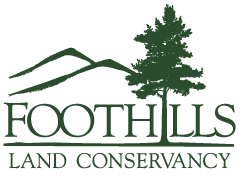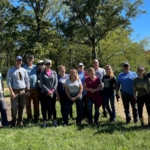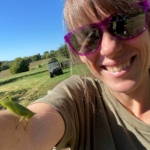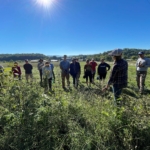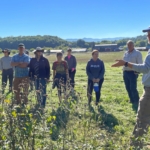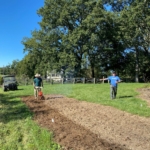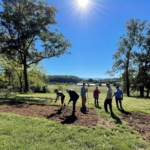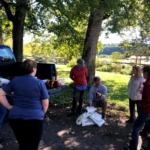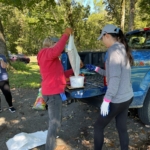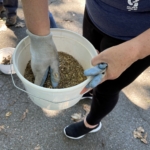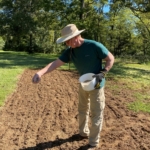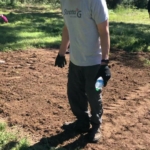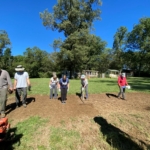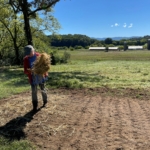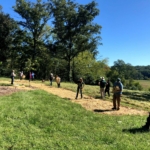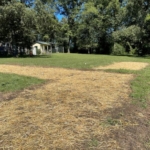Check out FLC’s Latest Pollinator Friendly Beds at the Harris Farm!
In late September of 2021, FLC and Strata-G employees partnered together, preparing 4 pollinator friendly meadow beds at FLC’s office headquarters Rockford, TN. These new pollinator patches are located a short distance away from another set established last year by Foothills staff.
Pollinator patches are a way to increase the natural beauty around us, decrease the time and resources that we have to invest in maintaining a lawn, benefit local wildlife, and enhance ecosystem services provided with their deeper and more robust root systems. Seeds utilized for the project include eastern gamma grass highlander, little bluestem, iron weed, purple prairie clover, greyheaded coneflower, and rigid goldenrod just to name a few.
Check out the gallery of photos to learn about the initial process of preparing and sowing these beds. A big thank you to the folks at Strata-G for their ongoing support of FLC’s land conservation programs!
Click here for a list of bird and butterfly species observed by FLC’s biologists at the Harris Farm.
- Group photo! Many thanks to the Strata-G volunteers that assisted FLC staff with the initial steps for our pollinator patches.
- Kate with a katydid! (Photo courtesy of Kate Honebrink with Strata-G.)
- FLC Biologist, Shelby Lyn Sanders, provides a tour of the first pollinator beds prepared by FLC staff.
- FLC GIS Director and Biologist, Matt Moore, discusses seed collecting.
- A Strata-G volunteer takes the helm of a tiller to help prepare the soil. (Photo courtesy of Kate Honebrink with Strata-G.)
- A beautiful day to be out at FLC’s office at the Harris Farm! After tilling, the Strata-G volunteers begin the process of preparing the soil with rakes to remove clumps and level the beds.
- FLC Director of GIS and Biologist, Matt Moore, discusses the different types of seed mixes that will be used for the day’s sowing project. (Photo courtesy of Grace Kihm with Strata-G.)
- Volunteers weigh and mix the seeds prior to adding in vermiculite.
- Native seeds are mixed into vermiculite prior to sowing. This mixture will make it easier to locate where the seeds have made contact with the ground.
- A Strata-G volunteer spreads out a mixture of wildflower and grass seed. (Photo courtesy of Kate Honebrink with Strata-G.)
- Stomping on the ground in the name of pollinator friendly practices! This ‘step’ helps to tamp down the seed just enough to avoid going too deep but not so shallow as to get picked up by the wind or the birds. (Image courtesy of Grace Kihm with Strata-G.)
- Great ‘action’ photo showing the process of raking the soil to level it out and remove clumps, sowing the seeds, and stomping the ground to tamp down the seeds. (Photo courtesy of Kate Honebrink with Strata-G.)
- A Strata-G volunteer places a thin layer of straw to cover the pollinator bed.
- Group works together on the last step of placing straw down. This is done to protect the seed from being displaced. (Photo courtesy of Grace Kihm with Strata-G.)
- Ready to grow! The initial stage is now complete. Stay tuned for Part 2 – to take place in Spring of 2022!
To learn more about FLC’s first pollinator project and land stewardship at the Harris Farm, check out these links:
FLC’s Habitat Related Facebook Posts & Resources Page
Harris Farm ‘Our Story’ with Gallery of Images
